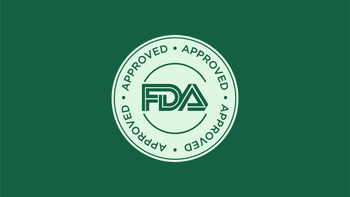
What You Need to Know About Testosterone-Based (Masculinizing) Hormone Therapy
Key takeaways:
Some people choose testosterone-based gender-affirming hormone therapy (GAHT) as part of their gender-affirming care. It involves taking testosterone to encourage masculinizing physical changes in the body.
There are several different forms of testosterone available for GAHT. Testosterone injections are most commonly used. But topical gels are also available.
There’s a theoretical risk of blood clots and stroke from taking testosterone. This is typically managed by monitoring your blood work during treatment. Adjustments may be made, as needed. Infertility is also possible, as well as birth defects if you become pregnant.
You’ve likely heard of the hormone testosterone. Testosterone is typically produced in all bodies, but in different amounts for different bodies. It’s one of the sex steroid hormones involved in the development of the various physical changes classically associated with puberty, like hair growth and changes in voice and body parts.
If you’re transgender, a broad term generally describing someone whose gender identity is different from their sex assigned at birth, testosterone (often shortened to “T”) might be a part of your gender-affirming hormone therapy (GAHT). The same is true for gender non-conforming and non-binary folks. Testosterone can also be an important therapy for intersex folks.
Here we’ll review gender-affirming care, and what it might look like for someone using testosterone-based therapies.
What is testosterone-based (masculinizing) hormone therapy?
Some people may choose testosterone-based gender-affirming hormone therapy (GAHT) as part of their gender-affirming care. Gender-affirming care, a model discussed in depth by the trans telehealth company Plume, is, at its core, exactly what it sounds like — healthcare that affirms you to live authentically in your gender.
Previously, care for transgender people often followed an outdated one-size-fits-all framework. This involved a provider dictating the same set of hormones and surgery for every trans person seeking medical care. Instead, gender-affirming care allows each person to seek only those interventions they desire to affirm their own gender identity.
Why it is used
As part of gender-affirming care, GAHT is prescribed to encourage physical changes in the body to help people live their authentic selves with respect to their gender identity or lack thereof Testosterone-based GAHT is intended to have masculinizing effects on the body. It involves taking testosterone, which we’ll cover in greater detail later.
Research has shown that the gender-affirming care model improves health outcomes for trans people. In fact, it’s considered standard of care and is supported as a medical necessity by nearly every major medical association in the U.S., including the American Medical Association, the American Academy of Family Physicians, and the American Psychiatric Association.
The Endocrine Society, the University of California, San Francisco, and the World Professional Association for Transgender Health (WPATH) have published clinical guidelines on how to use medications for GAHT.
GAHT vs. hormone replacement therapy
These two terms are often confused or used interchangeably. So, let’s take a moment to differentiate GAHT from hormone replacement therapy (HRT).
HRT has been used to describe the process of prescribing hormones to cisgender people, often to relieve symptoms of hormone imbalance. For example, testosterone may be prescribed to cisgender men with low testosterone levels who have symptoms like changes in sexual function.
GAHT is a more accurate description of the use of hormones by trans people because nothing is technically being “replaced.” The medical community who takes care of trans folks is moving away from saying “HRT,” and instead, is using “GAHT” to differentiate between the two.
Testosterone for testosterone-based GAHT
Testosterone is the cornerstone of testosterone-based GAHT, which uses synthetic testosterone. We’ll briefly compare the two main testosterone uptake methods and doses you might be prescribed for testosterone-based GAHT: injection or gel.
Please note that all doses listed below are sample starting ranges and are adjusted based on a conversation with your provider.
1. Injection
Injection is the most common uptake method for testosterone in GAHT. The extent and speed of change is ultimately determined by your testosterone dose and levels in your body, as well as your individual genetic makeup. But anecdotally, it seems that injections bring about change quicker than other forms.
There are two methods of injection: intramuscular (IM) and subcutaneous (SC). IM injections are injections into the thigh area. SC injections use a shorter, thinner needle and are given just under the skin in the belly. Both IM and SC injections are given at the same dose once a week, and they work exactly the same way.
Testosterone cypionate is the most common form of injectable testosterone. For people who are allergic to testosterone cypionate, the alternative testosterone enanthate is used instead. Both are available as lower-cost generics.
2. Topical gel
Topical gel causes more gradual changes than injections. It’s applied every morning to the skin and takes a few hours to completely dry. This is important because if it’s not completely dry, the gel can rub off on other people. They can absorb it and experience physical changes related to higher testosterone levels themselves.
There are a variety of formulations of testosterone gel. Examples of brand-name products include AndroGel and Testim. Lower-cost generic testosterone gel is also available.
WHAT TO READ NEXT
Popular stories this week
What are the effects of testosterone-based therapy?
Most folks first start noticing changes like lower voice, facial hair growth, and stopping of monthly bleeding at about 2 to 3 months after beginning testosterone by the injection method.
Some people notice feeling better emotionally shortly after starting T — in particular, they report less anxiety and more confidence. Some other physical changes that occur more gradually include:
Body fat redistribution
Increased muscle mass
Increased and darker facial and body hair growth
Broadened shoulders
More angular eyes and face
Increase in libido (sex drive)
Enlargement of some genital parts
Deeper voice
Most people will max out on physical changes somewhere between 2 to 5 years after starting testosterone.
Good to know: Especially during the first year of taking testosterone, you may notice acne on areas such as your face, chest, and back. If this happens, talk to your healthcare provider about skin care tips and potential treatment options.
What are some risks of testosterone-based therapy?
There are a few potential risks of testosterone-based GAHT to know about. Fortunately, there are ways you can manage them. Examples include:
Increased hemoglobin/hematocrit (H/H): This number tells your provider about the amount of red blood cells you have in your body. If H/H levels get too high, there’s a theoretical risk of blood clots and stroke. This may happen if your testosterone dose is too high. There are no documented cases of complications from elevated H/H in the context of GAHT. Your provider will monitor your H/H and testosterone levels during treatment and make adjustments as necessary.
Birth defects: Testosterone is known to cause severe birth defects. Because of this, contraception is strongly encouraged while taking T, depending on your sexual partner and intact sexual organs. All forms of birth control (like the pill, implant, and IUDs) are fine to use with testosterone and won’t interfere with T’s effectiveness.
Infertility: Because of how it can affect estrogen levels, T could also cause infertility. If preserving fertility is important to you, you may want to consult a reproductive specialist about ways to make a pregnancy happen later. If you’re on testosterone therapy and want to become pregnant or collect genetic material for a future pregnancy, you’d generally have to stop T for several months to complete the necessary processes.
If you have any concerns about the potential risks of testosterone-based GAHT, it’s important to discuss them with your healthcare provider.
How do you start masculinizing hormone therapy?
If you want to learn more about testosterone-based GAHT, the best place to start is by talking to your healthcare provider. However, if you don’t have one, you can find a local gender-affirming provider near you by visiting the WPATH provider directory. You can also check to see if you live in a state covered by Plume, a telehealth company providing gender-affirming care, made by and for trans people.
Plume offers a mobile app where you can consult with a provider, develop an individualized treatment plan, and have your prescriptions delivered to your door, all for a flat monthly fee of $99 (no insurance required). You can learn more about Plume’s GAHT services on their website.
The bottom line
Testosterone is the cornerstone of testosterone-based GAHT. Some people take it as part of their gender-affirming care to encourage masculinizing physical changes in the body. There are several different forms of testosterone to choose from, including an injection or topical gel.
If you’re interested in starting testosterone-based GAHT, talk to your healthcare provider. Other resources, such as the WPATH directory and Plume, are also available to connect you to a gender-affirming provider.
Co-contributors: Rachel Percelay, Alyssa Billingsley, PharmD
References
American Medical Association. (2019). Health insurance coverage for gender-affirming care of transgender patients.
Colman, E., et al. (2022). Standards of care for the health of transgender and gender diverse people, Version 8. International Journal of Transgender Health.
Deutsch, M. B. (2016). Guidelines for the primary and gender-affirming care of transgender and gender nonbinary people. UCSF Transgender Care.
Deutsch, M. B. (2016). Overview of masculinizing hormone therapy. UCSF Transgender Care.
Deutsch, M. B. (2020). Information on testosterone hormone therapy. UCSF Transgender Care.
Hembree, W. C., et al. (2017). Endocrine treatment of gender-dysphoric/gender-incongruent persons: An Endocrine Society* Clinical Practice Guideline. The Journal of Clinical Endocrinology & Metabolism.
Murad, M. H., et al. (2010). Hormonal therapy and sex reassignment: A systematic review and meta-analysis of quality of life and psychosocial outcomes. Clinical Endocrinology.
Plume. (n.d.). Where is Plume available?
Plume. (2020). What is gender-affirming care?
Radi, R., et al. (2022). Treating acne in transgender persons receiving testosterone: A practical guide. American Journal of Clinical Dermatology.
White Hughto, J. M., et al. (2016). A systematic review of the effects of hormone therapy on psychological functioning and quality of life in transgender individuals. Transgender Health.




























